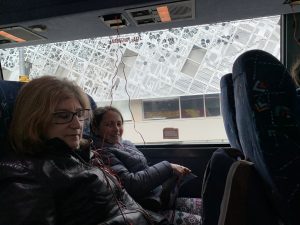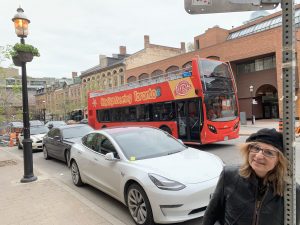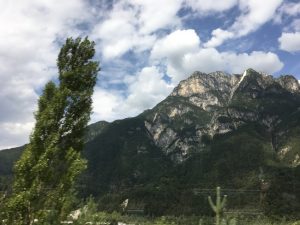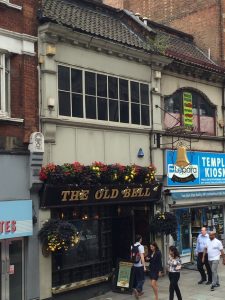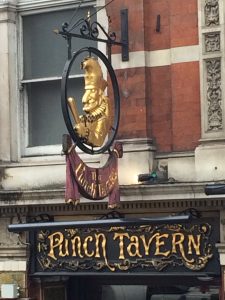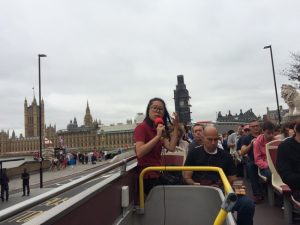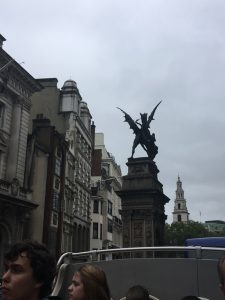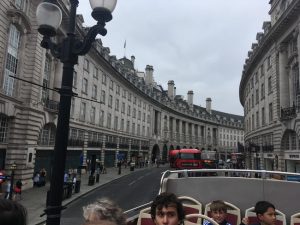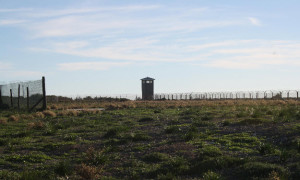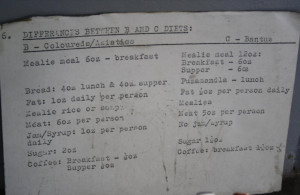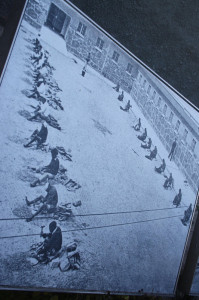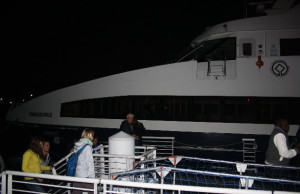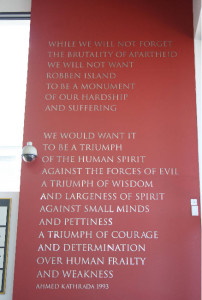Tag Archive
activity architecture art artist building Canada children city CostSaver downtown drive i-95 entertainment Europe event exhibit family festival Florida food fun historic History landmark local Museum music Nature New Zealand Ontario roadtrip sculpture Seattle show sights sightseeing tour tourist Trafalgar travel travelblogger view Washington Washington State water world
Canada: Toronto, Ontario: Hop on Hop Off Bus in Toronto
Sightseeing double-decker Toronto tourist bus offers indoor-outdoor live commentary and does the full circuit of Toronto’s sites; A harbor cruise is even included in your ticket.
Austria, Vienna: Mountain Views from the Bus
.
You never mind long bus rides – this one from Vienna to Venice – when this is the kind of mountain scenery you are passing.
Great Britain, London: London Pubs
.
Pubs are inexpensive places to grab a bite and a beer in London. Some of them are hundreds of years old. Notice the wrought iron bell above The Old Bell tavern and the caricature of Punch on Punch Tavern. Many people back then were illiterate so objects were hung to create easy way for them to find shops and pubs. We passed these on Fleet Street while aboard the Hop On Hop Off Bus which was included in the London Pass.
The Bell Tavern was built by architect Sir Christopher Wren in the 1670’s while he was working on the churches nearby. Since it is located on the famous Fleet street which was the epicenter of the newspaper industry, the writers and inkies(printers), penned their copy here while probably perennially hammered.
Punch Tavern got it’s name in the 1840’s as Punch magazine had its office here on Fleet Street. There was a pub here even before then called the Crown and Sugar Loaf.
Great Britain, London: Big Ben and Parliament
.
You get two photo ops for the price of one in London because Big Ben (in the re-named Elizabeth Tower) stands right next to the Palace of Westminster (Houses of Parliament). Big Ben is the name of the largest bell. When built, in 1859, the clock was the largest and most accurate four-faced striking and chiming clock in the world. In August 2017, renovation work began in order to include a lift, and to re-glaze and repaint the clock dials. Though the clock could chime throughout the work being done, it was too loud for the workers so the bells will remain silent except for such occasions as New Year’s Eve and Remembrance Sunday. Here we caught it from the top of the Hop On Hop Off bus with the tour guide telling us about it.
Great Britain, London: Monsters Protecting Us
.
Beyond the regal London, you might come across a dragon in the sky when you take the Hop On Hop Off Bus. This one was on the way to St. Paul’s Cathedral and the Tower of London. Free ride when you buy the London Pass.
Great Britain, London: Hop On Hop Off Bus
.
These double decker sightseeing buses are available on your London Pass (or not). You can enjoy the fresh air on top watching and listening to the narrator or stay downstairs for the inside edition. Don’t forget to pick up earplugs when you hop on the bus. There are a few routes which take you all around the highlights of the city. You can just ride the bus all day too – and give your feet a rest.
US: Clinton, MD – American History Buffs This Tour is for you
On the night of April 14, 1865, President Abraham Lincoln was shot by the dashing young actor, John Wilkes Booth, at Ford’s Theatre in Washington City. While Lincoln lay dying, his assassin was making his escape into Southern Maryland.
Over the next twelve days, Booth and his accomplice, David Herold, were tracked through the lower counties of Maryland and across the Potomac River into Viriginia. They were finally trapped at Garrett’s Farm near Bowling Green, Virginia, where Herold was taken prisoner and Booth was shot and killed by federal troops. Herold was hanged along with Mary Surratt on July 7, 1865.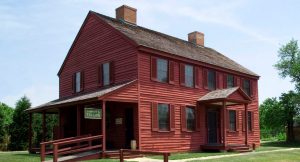
John Wilkes Booth Escape Route Tour – The Surratt Society sponsors tours each fall and spring along Booth’s escape route. Many of the same roads and houses used by Booth are still in existence and are visited on this excursion which is narrated by nationally-recognized authorities on the Lincoln assassination and John Wilkes Booth’s flight.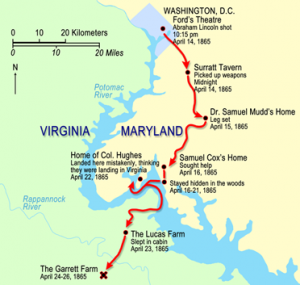
Follow the trail of President Lincoln’s assassin from Ford’s Theatre in Washington, D.C. to his death near Port Royal, Virginia. Relax and enjoy the history and scenery on this
12-hour, fully narrated bus tour. The cost is $85 per person ($80 for Surratt Society members). Proceeds go toward the preservation of the Surratt House Museum which was the first stop on Booth’s flight south.
To reserve your spot fill out this form.
Location: The Surratt House Museum, 9118 Brandywine Road, Clinton, MD 20735
Dates: Sat, September 8, 15 & 22, 2018
Time: 7 am –7 pm
Tel: 301-868-1121
surrattmuseum.org
For Regional Accommodations, Restaurants & Attractions: visitmaryland.org
US: Clinton, MD – Surratt House Museum for Christmas Past and Present
As you enter the side door of the Surratt House Museum you are walking in the path of John Wilkes Booth the night he killed President Lincoln, since he came here to retrieve a rifle, field glasses and supplies for his run from the law.
Built in 1852, this was a tavern, an inn, a post office and a polling place. It was a safe house for the Confederate underground. The massive search for Booth led them here to Mary Surratt’s house, and as a result she was tried in a military court and convicted of conspiracy to assassinate the President. On July 7, 1865 Mary Surratt was the first woman to be executed by the federal government.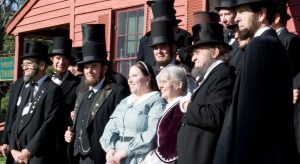
In your visit to this famous house, a docent in 1860’s period clothing walks you through the typical middle class home. History buffs can make reservations for the 12-hour “Escape Route” bus tour. Many of the same roads and houses used by Booth are still in existence and are visited on this excursion which is narrated by nationally-recognized authorities on the Lincoln assassination and John Wilkes Booth’s flight. Tour Dates for 2018: Apr 14, 21, 28 and Sept 8, 15, 22.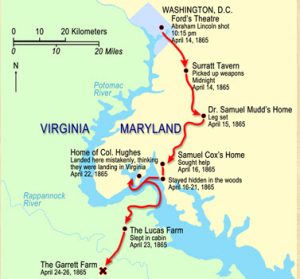
If you’re in the Clinton area Sat, Dec 2 – Sun, Dec 10, stop by the Surratt House Museum for their special Christmas program- An Old Fashioned Holiday: Bringing Christmas Past to Christmas Present, celebrating the Christmas of yesteryear amid period decorations, special exhibits and seasonal histories. On the weekend of December 9 and 10, return to enjoy special activities for all ages, cookies, cider, and holiday discounts in the museum’s gift shop.
Location: Surratt House Museum, 9118 Brandywine Road, Clinton, MD 20735
Hours: Wed – Fri 11am – 3pm, Sat -Sun 12 – 4pm
The Surratt House Museum is closed from Dec 12th to Jan 17th.
Tel: 301-868-1121
surrattmuseum.org
For Regional Accommodations, Restaurants & Attractions: visitprincegeorgescounty.com
US: Join Fabien Cousteau During His 31-day Underwater Mission
Grandson of Jacques Cousteau, Fabien Cousteau was entranced by his grandpa’s films and underwater life. Right now he’s in the Florida Keys with a 5-person crew making a documentary and doing science experiments about the ocean.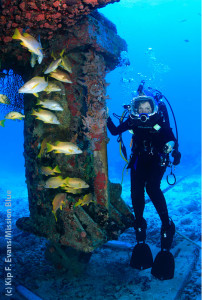
They will live there for 31 days in the 37-sq. ft Aquarius Reef Base, a school bus size laboratory which is 18 metres below the ocean’s surface a few kilometers off of Key Largo, Florida. Cousteau raised the cash to save the lab which was threatened to close due to US federal budget cuts.
Remaining in an underwater lab allows them to scuba dive for extended periods of time without having to return to the surface to decompress. This Mission 31 will add to the legacy of Jacques Cousteaus’s 1963 Conshelf II 30-day underwater experiment in the Red Sea. He filmed the Oscar winning documentary “World Without Sun” there.
This mission can be broadcast live online. The aquanauts will communicate with public through social media and video chats. It ends on July 2nd. “For the first time, I’m able to invite the world on a Cousteau expedition in real time”, said Couseau.
http://aquarius.fiu.edu
http://aquariusreefbase.org
www.ustream.tv/aquariusreefbase
www.facebook.com/AquariusReefBase
South Africa: Visiting Robben Island, UNESCO World Heritage Site
By Adele Shapiro – March 2012.
As a child I used to visit Robben Island with my grandmother. Her son, my uncle, was a warder in the prison services there. The name “Robben”, despite sounding very English – is in fact the Dutch for “Seal” – and the name derives from the extensive seal colony that was found on the Island by the first Dutch settlers.
We would go to the Cape Town docks and from there, take a boat ride to the island, where we would spend the day with family. I was vaguely aware that there were bad people on the island, and that it was a prison…. but little did I know then of the role it was to play in South Africa’s later history. Years passed and now as an ad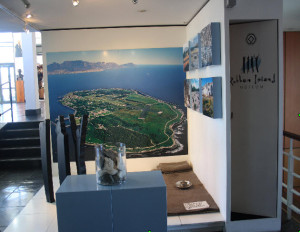 ult, I found myself revisiting the place where “the bad people” were kept, only now I realized that some were not so bad after all.
ult, I found myself revisiting the place where “the bad people” were kept, only now I realized that some were not so bad after all.
I bought a ticket for the tour some days before the trip, (advisable, as they fill up quickly) and took time out to examine the display at the Nelson Mandela Gateway at the V&A Waterfront in Cape Town.
There were many photographs of the political dissidents, the calls for boycotts, the anti-apartheid marches and there was also a prison cell that had been reconstructed for the purposes of the exhibit. I strongly recommend a visit to this exhibit before going to the island as it helps to contextualize the experience.
The trip began, as in times of old, with a boat ride from Cape Town docks, but this time instead of my uncle meeting us, we had a pleasant tour guide who told us jokes on our bus trip, whilst pointing out various sights on the island. Our bus was parked under a sign that said: “Welcome. We serve with pride.” I wondered if that sign had been there when Robben Island had been a prison as it was so sharply incongruous to the environment. I hoped not.
 Robben Island has had a long history. First as a lighthouse to warn ships of the VOC, the Dutch East India Company (Verenigde Oostindische Compagnie), of the rocks that surround the island. But since the end of the 17th century, Robben Island has been used for the isolation of (mainly) political prisoners. The island was also used at various times as an animal quarantine station, a home for slaves, a leper colony, a hospital for the mentally ill and as a prison for French Vichy prisoners of war.
Robben Island has had a long history. First as a lighthouse to warn ships of the VOC, the Dutch East India Company (Verenigde Oostindische Compagnie), of the rocks that surround the island. But since the end of the 17th century, Robben Island has been used for the isolation of (mainly) political prisoners. The island was also used at various times as an animal quarantine station, a home for slaves, a leper colony, a hospital for the mentally ill and as a prison for French Vichy prisoners of war.
First we saw the Leper Graveyard and then house where Robert Sobukwe (Founder of the Pan Africanist Congress) had been kept separate from the other political dissidents.
It seems that Robert Sobukwe had special status in the prison. He was kept in solitary confinement at all times, but allowed certain privileges including access to books, being permitted to study, being permitted to wear civilian clothes, and being permitted bread. His children were allowed to visit him and they had their own bedroom in his “house”. Robert Sobukwe was convicted of incitement for demonstrating against and defying the Pass Laws, and in particular, for his connection to the PAC demonstration (although he was not present) which became known as the Sharpeville Massacre.
The notorious Pass Laws required black people to carry a pass book at all times when outside their compounds or designated areas, and were designed to limit severely the movements of the non-white population. This legislation was one of the dominant features of the country’s apartheid system.
Sobukwe was sentenced to three years in prison. After serving his sentence, he was moved to Robben Island for internment, as a new law called the General Law Amendment Act had been passed, which permitted his imprisonment to be renewed annually at the discretion of the Minister of Justice. This procedure became known as the “Sobukwe clause” and Robert Sobukwe was the only person whose imprisonment was extended under this clause. Imagine how special one has to be in order for parliament to pass a law just for you!
We also learned from our tour guide that the American politician and Pastor, Andrew Young, had fostered Sobukwe’s children in the USA, while Sobukwe had been in prison.
Our tour continued to the lime quarry where the political prisoners had worked. At the entrance to the quarry we saw a small cairn, and learned its history. In February 1995, (the landmark change of government was in 1994), about one thousand former political prisoners gathered again on Robben Island, but this time as free men, and to mark the occasion, each one placed a small stone from the quarry in a pile, making a small memorial to their years of hardship and struggle.
As we continued on our bus ride, we were shown a church, a hospital, a school and a mosque, and realized that far beyond our expectations, the island had supported a whole community. We duly arrived at the prison and tumbled out of the bus for our tour of “the real thing”. We were excited and filled with high spirits and I wondered for a moment where my heart would have been had I not been a tourist.
Inside we found grey walls. It was cool at midday; it was clear that at midnight it would be very cold. The communal cells were large and each had a bathroom attached.
Here we met our prison tour guide, Derrick Basson, a former political prisoner who served time on Robben Island for sabotage.
Derrick was very patient, humble and remarkably, not bitter. He answered all the insensitive questions calmly and without anger. In addition he explained the grading of the prisoners by race and also the diets that varied due to the racial classification of each prisoner. One of the curious facts he told us was that black prisoners were not given bread. As they were Africans their “natural” food was considered to be maize meal. The mixed race prisoners were allowed bread as they were considered to be more western or European and less African. The black Africans were also not allowed jam or syrup. I suppose you do not need jam if you have no bread.
Then I remembered that Robert Sobukwe, in spite of being black, was allowed to have bread, and it struck me that this must have been because he had been a university professor, and since this is a very “European” and non-tribal job, maybe he was considered eligible to receive bread.
Derrick further explained how prisoners slept on mats on the floor and how 5 blankets had not been enough to keep them warm at night. I suddenly remembered an interview with a former Alcatraz inmate who spoke of the extreme cold and of how prisoners had learned to sleep with only their elbows and knees touching the floor, hands locked behind the head. I became very grateful for my duvet.
We were told that in the beginning the political prisoners had been kept with the ordinary criminals, but later on, they were, thankfully, given their own “wing” and kept together. They came to call this place “The University” as they learned many things from each other and many of them also obtained degrees while in prison.
Derrick then took us to a yard where the prisoners had chopped rocks and turned them into stones, day after day in the sun. They were told that these rocks were used for roads built on the island, but no one seemed to know if this was true or not.
We were then taken to Nelson Mandela’s cell. Mandela was a militant anti-apartheid activist, as well as the co-founder and leader of the armed wing of the African National Congress (ANC), Umkhonto we Sizwe or “Spear of the Nation”. He was arrested in 1962 and convicted of sabotage, (amongst other charges), after he admitted to manufacturing explosives and acts of public violence, and was sentenced to life imprisonment. Mandela served 27 years in prison, 18 of these on Robben Island. After his release, he served as President of South Africa from 1994 to 1999.
My very first impression was of how small the cell was. No, not small, tiny. And then I thought that at least he could stand up and lie down in it, but not much more than that. At least it was larger than the dreadful box that I had heard was used in China. But there was no toilet. Just a metal bucket with a lid. At least a lid. And no tap, so no water. And if you are thirsty during the night, what should you do? And of course there was no electrical socket and no radio nor TV. And all I could think of was 27 years. TWENTY SEVEN YEARS! There was no door handle on the inside. The door was only operational from the outside, not unlike a cage. I remembered that Nelson Mandela had once remarked that the hardest and most traumatic experience he endured whilst on Robben Island for all those years was that he never ever saw, or even heard, a child. Can you imagine that? Now he insists on being photographed with children, whenever possible.
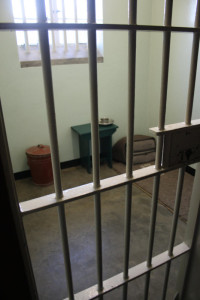 And then it was all over. We walked out to the yard, Derrick took us to the exit, and we said our goodbyes.I felt an odd mixture of elation and depression. Very happy that I had been to a UNESCO World Heritage Site of such importance, happier still that it was no longer a prison, and most happy that I was leaving. Yet also depressed and ashamed because of the suffering this place represented.
And then it was all over. We walked out to the yard, Derrick took us to the exit, and we said our goodbyes.I felt an odd mixture of elation and depression. Very happy that I had been to a UNESCO World Heritage Site of such importance, happier still that it was no longer a prison, and most happy that I was leaving. Yet also depressed and ashamed because of the suffering this place represented.
Duly subdued, we gratefully returned to our boat to ponder our feelings of inspiration and shock, enjoy the beautiful sunset cruise back to Cape Town, and watch a school of dolphins at play in the sea.
Remember when planning a visit to Robben Island, that the tours don’t always run on time. There was no snack bar on the boat. Our boat was 1 hour late in leaving Cape Town harbour and then we were rushed through our tour, which was a pity as there was too little time for questions.
A suggestion would be to make no appointments after the visit as the timing can vary, and also, take a snack pack. A sun hat and sun block are also good ideas.
Ferries depart (supposedly) at 9am, 11am, 1pm and 3pm, weather permitting, from Nelson Mandela Gateway, at the V&A Waterfront in Cape Town. Tickets costs are R230 for adults and R120 for children (U/18). Telephone: +27 (0)21 413 4200
Fax: +27 (0)21 419 1057
